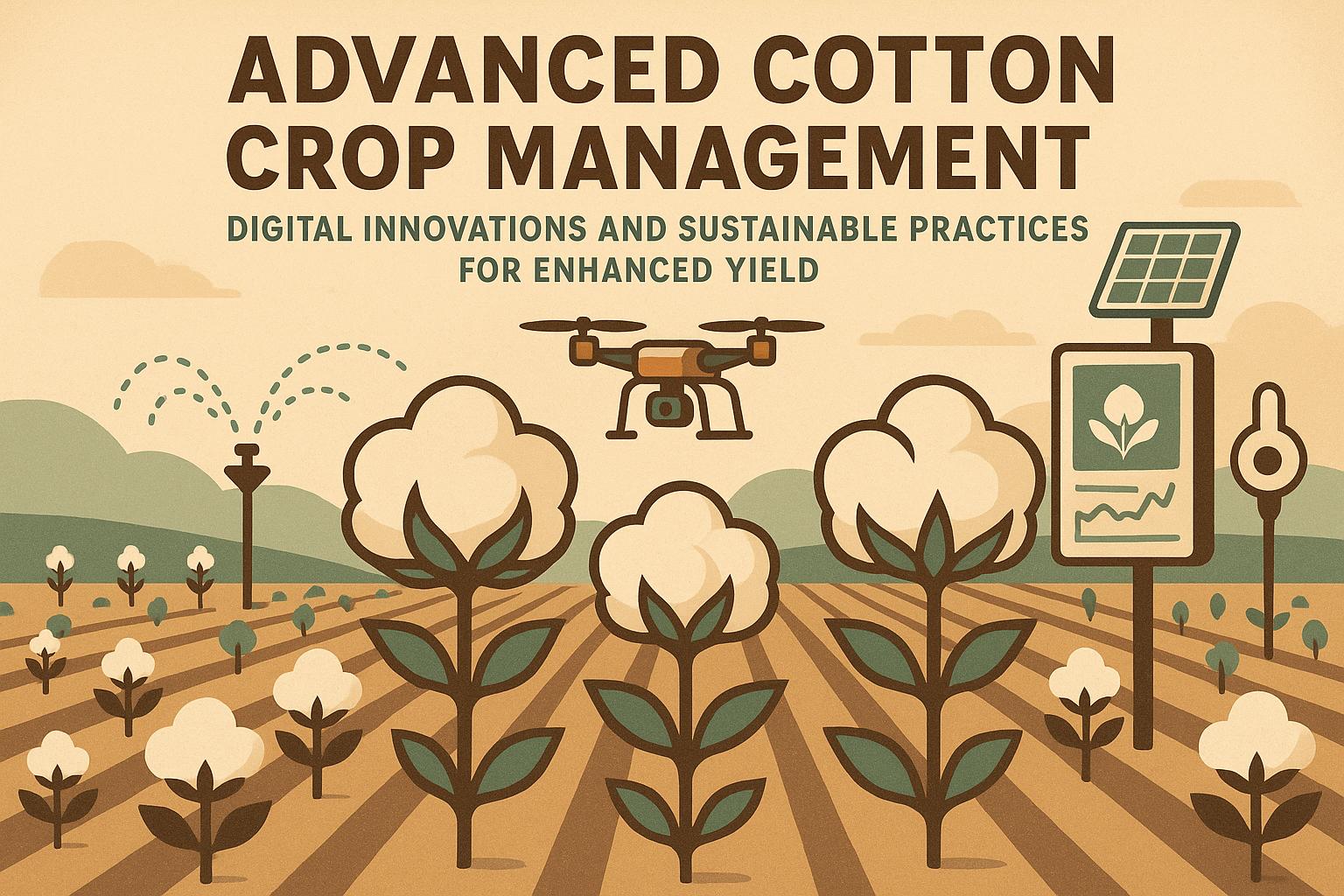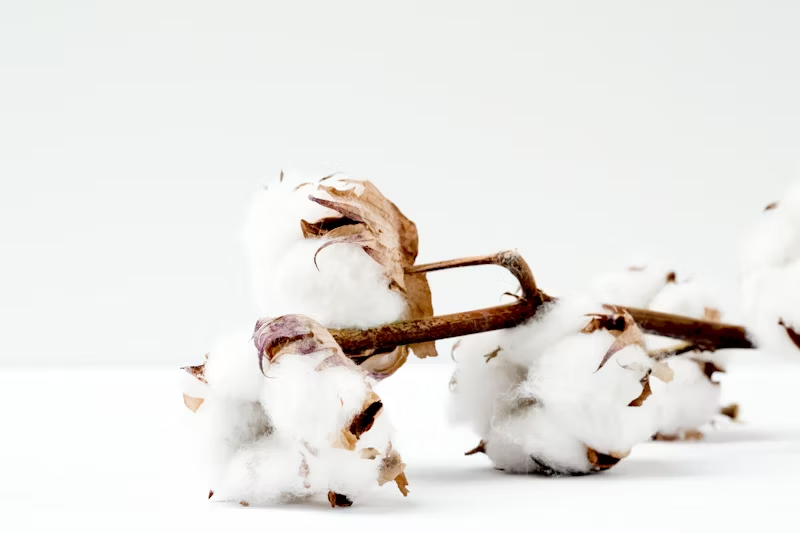Cotton gin compost is a soil amendment made from cotton ginning byproducts, such as cotton stalks, seeds, and cotton gin trash (CGT). It offers a natural way to improve soil health and reduce reliance on chemical fertilizers. Here's what you need to know:
- Nutrient Profile: Contains up to 2.85% nitrogen, 0.56% phosphorus, and 0.2% potassium, making it a nutrient-rich option for crops.
- Composting Benefits: Enhances nutrient release, improves soil structure, and supports microbial activity, leading to healthier soils and better crop yields.
- Application: Suitable for various crops, including specialty crops like lettuce, and can be combined with inorganic fertilizers for optimal results.
- Environmental Impact: Reduces waste from cotton production and minimizes nutrient runoff compared to synthetic fertilizers.
Cotton gin compost is a cost-effective solution for farmers near cotton processing facilities, offering long-term soil improvement and sustainable farming practices.
Nutrient Content of Cotton Gin Compost
Primary Nutrients in Cotton Gin Compost
The nutrient profile of cotton gin compost is a key factor in its value for agriculture. This compost provides three vital macronutrients essential for crop growth: nitrogen, phosphorus, and potassium. Studies reveal that cotton gin compost can contain up to 2.85% nitrogen, equating to about 43.66 lbs per ton. Nitrogen plays a critical role in promoting leaf development and overall plant vigor.
Phosphorus is present at 0.56%, or roughly 11.24 lbs per ton, aiding in strong root growth, flowering, and seed production. Additionally, potassium, found at a concentration of 0.2% (approximately 3.94 lbs per ton), helps plants endure stress and resist diseases.
Beyond these macronutrients, cotton gin compost contributes organic matter that releases nutrients gradually and supports soil microbes essential for plant health. It also provides trace elements necessary for optimal plant growth.
"Composting is a remarkable sustainable practice that transforms natural materials into nutrient-rich soil amendments." - CottonToday
With this nutrient profile, cotton gin compost offers an economical and sustainable alternative to chemical fertilizers.
How Composting Methods Affect Nutrient Levels
The composting process significantly enhances the nutrient composition of cotton gin byproducts compared to their fresh state. For instance, composted material contains at least 55% more total nitrogen and phosphorus oxide but about 35% less potassium oxide than fresh byproducts.
Regularly turning the compost - about twice a week - helps maintain temperatures above 104°F, speeding up decomposition and boosting nutrient availability. This practice ensures that beneficial microorganisms remain active throughout the process.
"Without proper aeration, microbial activity will be limited since most of microorganisms participating in decomposition are aerobic (oxygen loving). With limited microbial activity, composting would be slow." - Kefyalew (Girma) Desta, Former Assistant Professor
The choice of bulking agents and co-composting with other organic materials can also impact the final nutrient balance. For example, combining cotton gin waste with other organic inputs can produce a more evenly balanced compost than using gin trash alone.
Understanding Carbon/Nitrogen Ratio
Cotton gin trash begins with a carbon-to-nitrogen (C:N) ratio of 25:1 to 40:1, which is close to the ideal ratio of 30:1. As the compost matures, this ratio decreases to 10:1–15:1, signaling improved nitrogen availability .
Soil microorganisms, which function best with a C:N ratio around 8:1, are most efficient when provided with materials that have a ratio near 24:1. If the C:N ratio exceeds 35:1, microorganisms may temporarily lock up nitrogen, making it less available to crops. On the other hand, ratios between 1:1 and 15:1 can lead to rapid nitrogen release. While this can enhance crop growth, it may also increase nitrogen loss through leaching or volatilization. Properly aged cotton gin compost strikes a balance, offering a steady and effective nutrient source compared to fresh byproducts. These nutrient dynamics contribute to improved soil fertility and better crop outcomes.
Soil Fertility and Physical Property Changes
Improvements to Soil Physical Properties
Using cotton gin compost can significantly improve soil structure by forming stable aggregates that boost water retention, improve aeration, and help reduce erosion when used as mulch. Research shows that soils treated with cotton gin compost had a higher percentage of stable aggregates and better water-holding capacity by the second lettuce crop, compared to fields using conventional fertilizers. These physical changes not only enhance soil quality but also create conditions that promote biological activity in the soil.
Effects on Soil Organic Matter and Health
Cotton gin compost plays a key role in improving soil health by increasing microbial biomass, enzyme activity, and soil respiration - important indicators of healthy soil. In one study, soils treated with a combination of cotton gin compost and inorganic fertilizers showed a 32% rise in microbial biomass over three years compared to soils treated with compost alone. Enzyme activity also saw significant gains, including increases of 61% for dehydrogenase, 50% for protease, 36% for arylsulfatase, and 32% for phosphatase. After the second lettuce crop, organically treated soils demonstrated higher levels of carbon, nitrogen, and phosphorus, along with enhanced microbial activity and enzyme performance. These changes contribute to better nutrient cycling and overall soil health, while supporting the compost's ability to provide nutrients gradually over time.
Reduced Nutrient Loss and Better Cation Exchange Capacity
Cotton gin compost helps retain nutrients by improving the soil's cation exchange capacity, which reduces nutrient leaching and lowers fertilizer expenses. Unlike synthetic fertilizers that release nutrients quickly, the organic matter in cotton gin compost breaks down slowly, offering a steady nutrient supply throughout the growing season. This gradual release also slows nitrification and stabilizes soil chemistry, promoting sustainable plant growth. Studies suggest this process can minimize nutrient runoff and, in some cases, reduce or eliminate the need for additional fertilization for 6–12 months after application. The improved nutrient retention, along with a stable pH, creates ideal conditions for beneficial soil microorganisms, further enhancing nutrient cycling and supporting long-term soil health.
Application Methods and Crop Production Benefits
Application Rates per Acre
To make the most of cotton gin compost, application rates should align with your specific field conditions. These rates can vary depending on the crop and region, so it's crucial to start with a soil test to check nutrient levels and pH. Typically, compost is applied in the spring - allowing time for integration before planting - or in the fall to decompose over winter. Some farmers split applications across seasons to ensure a steady nutrient supply. Agricultural extension services often recommend starting with lower rates and adjusting based on how your crops respond. This methodical approach ensures that the compost's nutrient-rich profile benefits your soil without overloading it.
Composted vs. Raw Byproducts
The composting process transforms raw cotton gin byproducts into a stable and nutrient-rich soil amendment. Composted material contains over 47% more crude protein and fiber compared to fresh byproducts, which tend to have around 76% higher fat content. The composted version is less likely to cause nitrogen tie-up and offers more predictable nutrient release. It also helps reduce weed seeds and pathogens, making it safer and more effective for agricultural use.
The benefits of composted material are well-documented. For example, one study found a 5% increase in rice yield when cotton gin trash compost was applied, while another showed an impressive 315% boost in the biomass yield of Chenopodium quinoa when amended with 2% co-composted biochar. These findings highlight the compost’s ability to improve nutrient stability and decomposition efficiency, making it a valuable addition to U.S. farming systems.
Integration into U.S. Cropping Systems
Cotton gin compost is a natural fit for many farming systems, particularly in the Southeast, where it’s readily available and affordable. Pairing it with cover crops can amplify its benefits, improving soil health and water management. While cover crops are currently used on less than 10% of U.S. cotton fields, their potential is undeniable.
Georgia farmer Burton Heatwole, who oversees 1,500 acres, emphasizes the water management advantages of combining cover crops with cotton gin compost:
"After a heavy, 1-3 inch rainfall, that's where cover crops really shine. We have no runoff, no wash-outs, and the water in our ditches and ponds is clean. I wish all farmers knew how a cover crop can help them take advantage of all the sunshine, rain, and growing that can take place from September through November to improve soil health."
Adoption of these practices varies by region. The U.S. Regenerative Cotton Fund is actively working in states like Texas, Arkansas, Mississippi, Georgia, and others, with plans to expand into Missouri and California. By 2026, this initiative aims to remove one million metric tons of carbon dioxide equivalent from the atmosphere through regenerative farming practices.
Beyond traditional crops, cotton gin compost has potential in specialty applications. Studies show that ornamental plants grow just as well in substrates containing cotton gin compost as they do in conventional pine bark mixes. This opens new opportunities for nursery and specialty crop producers. Its ability to improve soil water-holding capacity is especially valuable in drought-prone areas, helping crops endure dry spells and potentially cutting irrigation needs.
For best results, cotton gin compost works well when combined with other soil management practices. Research by Tejada and Gonzalez found that using crushed cotton gin compost alongside inorganic fertilizers over three years led to better nutrient absorption, higher yields, and improved grain quality compared to using compost alone. This suggests that integrating cotton gin compost into a broader fertility program can maximize its benefits.
sbb-itb-0e617ca
Cotton Gin Compost vs. Conventional Fertilizers
Side-by-Side Comparison Table
Understanding the trade-offs between cotton gin compost and synthetic fertilizers is crucial for farmers aiming to optimize soil health and productivity. Here’s how they compare:
| Factor | Cotton Gin Compost | Conventional Fertilizers |
|---|---|---|
| Nutrient Content | Lower concentration: 1–2% N, less than 1% P | High concentration with precise N-P-K ratios |
| Nutrient Release | Gradual release as organic matter breaks down | Immediate nutrient availability |
| Soil Structure | Enhances aeration, water retention, and soil biology | Minimal impact on soil physical properties |
| Organic Matter | Adds 55% more total nitrogen and phosphorus than raw byproducts | May lead to organic matter depletion over time |
| Microbial Activity | Encourages beneficial soil microorganisms | Overuse can harm microbial communities |
| Cost Impact | Variable costs, potential for on-farm production | Accounts for 24–30% or more of production costs |
| Environmental Risk | Reduces nutrient leaching and runoff | Higher risk of over-fertilization and nutrient imbalance |
This comparison highlights the strengths and limitations of each option, helping farmers choose the best fit for their specific needs.
When to Choose Cotton Gin Compost
Cotton gin compost shines in scenarios where synthetic fertilizers may fall short. It’s especially effective in salt-affected soils, where it helps mitigate salinity issues by increasing chlorophyll and protein levels in plants under stress. Beyond this, it significantly improves soil structure and nutrient retention, making it a key resource for long-term soil health.
One of its standout benefits is its role in building soil over time. Unlike synthetic fertilizers, which can contribute to soil acidification, cotton gin compost gradually enhances soil structure and supports beneficial microbial communities. This makes it a smart choice for farmers committed to regenerative practices.
A study conducted near Seville, Spain, demonstrated the value of combining cotton gin compost with inorganic fertilizers. Over three years, researchers observed a boost in rice grain protein by 18%, starch by 7%, and overall yield by 5% compared to using compost alone. The addition of mineral nitrogen addressed nitrogen immobilization, enhancing biological activity in the soil and improving plant nutrient uptake.
Specialty crops like lettuce also benefit from cotton gin compost. Studies show that organic treatments using compost can achieve yields equal to - or even better than - synthetic fertilizers. These treatments also reduce nutrient-leaching risks and enhance soil enzyme activity, including phosphatase and β-glucosidase.
For farmers located near cotton processing facilities, cotton gin compost offers another advantage: reduced input costs. By lowering nutrient expenses, which typically account for 24–30% of production costs, it becomes an economical and sustainable option.
Summary and Key Points
Nutrient Advantages of Cotton Gin Compost
Cotton gin compost offers a nutrient-rich solution for farming, making it a valuable resource for improving soil and crop health. Made from byproducts of the ginning process, it provides 55% more nitrogen and phosphorus oxide compared to untreated materials. It also delivers essential nutrients like nitrogen (N), phosphorus (P), potassium (K), calcium (Ca), magnesium (Mg), and sulfur (S) in organic, slow-release forms that benefit crops over time.
The slow nutrient release reduces the risk of nutrient runoff, a common issue with synthetic fertilizers. Research near Seville, Spain, found that organic matter in cotton gin compost led to higher nitrate-nitrogen levels in the soil, improving nutrient absorption and boosting crop yields.
Additionally, cotton gin compost supports soil health by enhancing microbial activity, improving structural stability, and increasing soil porosity. These changes contribute to better long-term soil quality and fertility.
Practical Advice for Farmers
To maximize the benefits of cotton gin compost, consider these recommendations:
- Combine with other organic materials: Mixing cotton gin compost with other amendments helps balance the carbon-to-nitrogen (C:N) ratio, encouraging more effective nutrient release.
- Pair with inorganic fertilizers: This combination can improve grain protein by 18%, starch by 7%, and overall yield by 5%.
- Monitor application conditions: Apply when soil temperatures are at least 80°F and ensure proper moisture levels.
- Leverage its slow-release properties: Cotton gin compost provides consistent nutrition throughout the growing season, reducing the need for frequent fertilizer applications.
"Compost enables soil to better absorb and hold water, helping to reduce erosion and flooding in heavy rains and retain water during droughts." - EPA, 2025
For the best results, work with reputable cotton processing facilities, such as those listed on resources like cottongins.org, to source high-quality compost. For edible crops, always verify the quality of the compost to meet safety standards. By adopting these practices, farmers can support soil health and contribute to more sustainable agricultural systems in the U.S.
Longwood Plantation Ch 2: Composting cotton gin waste
FAQs
How does cotton gin compost compare to synthetic fertilizers in nutrient release?
Cotton gin compost offers a steady and prolonged release of nutrients, unlike synthetic fertilizers that act quickly. This slow release not only enhances soil fertility over time but also encourages healthy microbial activity, helping to minimize nutrient loss through runoff.
When composted, cotton gin byproducts become a nutrient-rich option, particularly high in nitrogen and phosphorus - about 55% more than their fresh counterparts. However, they contain roughly 35% less potassium, making them better suited for gradually improving soil health rather than delivering an immediate nutrient surge. This makes cotton gin compost an excellent option for maintaining soil vitality over the long term.
What are the environmental advantages of using cotton gin compost instead of traditional fertilizers?
Using cotton gin compost offers a range of benefits for the environment compared to using traditional fertilizers. It boosts soil health naturally by adding nitrogen and phosphorus - key nutrients plants need to thrive - while also improving the soil's ability to retain these nutrients. This means less dependence on synthetic fertilizers, which are often associated with runoff and water pollution.
On top of that, cotton gin compost encourages eco-conscious farming methods by repurposing agricultural byproducts and cutting down on waste. By enriching the soil and reducing harmful environmental impacts, it plays a role in supporting healthier ecosystems and promoting greener farming practices across the United States.
Can cotton gin compost be used for all crops, and how should it be applied for the best results?
Cotton gin compost is a flexible option for enriching various crops, thanks to its ability to boost soil fertility, add organic matter, and provide key nutrients like nitrogen, phosphorus, and potassium. That said, how well it works will depend on the specific crops you're growing and the condition of your soil.
To get the best results, mix the compost into the soil at rates that suit your crop and soil requirements. You can also pair it with inorganic fertilizers to maintain a well-rounded nutrient balance. Ensuring proper moisture levels and thoroughly blending the compost into the soil will not only enhance its effectiveness but also help reduce any potential environmental concerns.


